-
EXECUTIVE SUMMARY
-
MARKET INTRODUCTION
-
2.1.
-
Definition
-
Scope of the Study
- Research Objective
- Limitations
-
2.2.2.
-
Assumptions
-
RESEARCH METHODOLOGY
-
Overview
-
Data Mining
-
Secondary Research
-
Primary Research
- Breakdown of Primary
-
3.4.1.
-
Primary Interviews and Information Gathering Process
-
Respondents
-
Forecasting Model
-
Market Size Estimation
- Top-Down Approach
-
3.6.1.
-
Bottom-Up Approach
-
Data Triangulation
-
Validation
-
MARKET DYNAMICS
-
Overview
-
Drivers
-
Restraints
-
Opportunities
-
MARKET FACTOR ANALYSIS
-
5.1.
-
Value Chain Analysis
-
Porter’s Five Forces Analysis
- Bargaining
- Bargaining Power of Buyers
- Threat of
- Threat of Substitutes
- Intensity of Rivalry
-
Power of Suppliers
-
New Entrants
-
COVID-19 Impact Analysis
- Market Impact Analysis
- Opportunity and Threat Analysis
-
5.3.2.
-
Regional Impact
-
GLOBAL AI CCTV
-
MARKET, BY OFFERING
-
Overview
-
Hardware
- Camera Modules
- Monitor
- Storage
- Others
-
Software
-
6.4.
-
Services
-
GLOBAL AI CCTV MARKET, BY CAMERA TYPE
-
Overview
-
7.2.
-
PTZ Camera
-
Dome Camera
-
Bullet Camera
-
Box Camera
-
Others
-
GLOBAL AI CCTV MARKET, BY DEPLOYMENT
-
Overview
-
Cloud-based
-
On-premise
-
GLOBAL AI CCTV MARKET, BY END USER
-
Overview
-
Residential
-
Commercial
-
Industrial
-
GLOBAL AI CCTV MARKET, BY REGION
-
Overview
-
North America
- U.S.
- Canada
-
Europe
- Germany
- U.K
- Italy
- Spain
- Rest
-
10.3.2.
-
France
-
of Europe
-
Asia-Pacific
- China
- India
- South Korea
- Australia
- Rest of Asia-Pacific
-
10.4.3.
-
Japan
-
Rest of the World
- Middle East
- Africa
-
10.5.3.
-
Latin America
-
COMPETITIVE LANDSCAPE
-
Overview
-
Competitive
-
Analysis
-
Market Share Analysis
-
Major Growth Strategy in the
-
Global AI CCTV Market,
-
Competitive Benchmarking
-
Leading Players
-
in Terms of Number of Developments in the Global AI CCTV Market,
-
Key
- New Dosage Form Launch/Type Application
- Merger & Acquisitions
- Joint Ventures
-
developments and Growth Strategies
-
Major
- Sales & Operating Income, 2022
-
Players Financial Matrix
-
11.8.2.
-
Major Players R&D Expenditure. 2022
-
COMPANY PROFILES
-
AXIS
- Company Overview
- Financial Overview
- Dosage Forms Offered
- Key Developments
- SWOT Analysis
- Key Strategies
-
COMMUNICATIONS AB
-
BOSCH SECURITY SYSTEMS GMBH (ROBERT BOSCH GMBH)
- Company Overview
- Financial Overview
- Dosage Forms
- Key Developments
- SWOT Analysis
- Key
-
Offered
-
Strategies
-
D-LINK CORPORATION
- Company Overview
- Dosage Forms Offered
- Key Developments
- SWOT Analysis
- Key Strategies
-
12.3.2.
-
Financial Overview
-
EAGLE EYE NETWORKS
- Company Overview
- Financial Overview
- Dosage Forms
- Key Developments
- SWOT Analysis
- Key
-
Offered
-
Strategies
-
HANGZHOU HIKVISION DIGITAL TECHNOLOGY CO., LTD.
- Financial Overview
- Dosage Forms Offered
- Key Developments
- SWOT Analysis
- Key Strategies
-
12.5.1.
-
Company Overview
-
HANWHA TECHWIN.
- Company Overview
- Financial Overview
- Dosage Forms Offered
- Key Developments
- SWOT Analysis
- Key Strategies
-
Panasonic Corporation
- Company Overview
- Financial Overview
- Dosage Forms Offered
- Key
- SWOT Analysis
- Key Strategies
-
Developments
-
Swann
- Company Overview
- Financial Overview
- Dosage Forms
- Key Developments
- SWOT Analysis
- Key
-
Offered
-
Strategies
-
FLIR Systems, Inc.
- Company Overview
- Dosage Forms Offered
- Key Developments
- SWOT Analysis
- Key Strategies
-
12.9.2.
-
Financial Overview
-
VIVOTEK INC.
- Company Overview
- Financial Overview
- Dosage
- Key Developments
- SWOT Analysis
-
Forms Offered
-
12.10.6.
-
Key Strategies
-
APPENDIX
-
References
-
Related
-
Reports
-
-
LIST OF TABLES
-
GLOBAL AI CCTV MARKET, SYNOPSIS,
-
GLOBAL AI CCTV MARKET, ESTIMATES & FORECAST, 2018-2032
-
(USD BILLION)
-
GLOBAL AI CCTV MARKET, BY OFFERING, 2018-2032 (USD BILLION)
-
GLOBAL AI CCTV MARKET, BY CAMERA TYPE, 2018-2032 (USD BILLION)
-
TABLE
-
GLOBAL AI CCTV MARKET, BY DEPLOYMENT, 2018-2032 (USD BILLION)
-
GLOBAL
-
AI CCTV MARKET, BY END USER, 2018-2032 (USD BILLION)
-
NORTH AMERICA
-
AI CCTV MARKET, BY OFFERING, 2018-2032 (USD BILLION)
-
NORTH AMERICA
-
AI CCTV MARKET, BY CAMERA TYPE, 2018-2032 (USD BILLION)
-
NORTH AMERICA
-
AI CCTV MARKET, BY DEPLOYMENT, 2018-2032 (USD BILLION)
-
NORTH AMERICA
-
AI CCTV MARKET, BY END USER, 2018-2032 (USD BILLION)
-
NORTH AMERICA
-
AI CCTV MARKET, BY COUNTRY, 2018-2032 (USD BILLION)
-
U.S. AI CCTV MARKET,
-
BY OFFERING, 2018-2032 (USD BILLION)
-
U.S. AI CCTV MARKET, BY CAMERA
-
TYPE, 2018-2032 (USD BILLION)
-
U.S. AI CCTV MARKET, BY DEPLOYMENT,
-
U.S. AI CCTV MARKET, BY END USER, 2018-2032
-
(USD BILLION)
-
CANADA AI CCTV MARKET, BY OFFERING, 2018-2032 (USD BILLION)
-
CANADA AI CCTV MARKET, BY CAMERA TYPE, 2018-2032 (USD BILLION)
-
TABLE
-
CANADA AI CCTV MARKET, BY DEPLOYMENT, 2018-2032 (USD BILLION)
-
CANADA
-
AI CCTV MARKET, BY END USER, 2018-2032 (USD BILLION)
-
EUROPE AI CCTV
-
MARKET, BY OFFERING, 2018-2032 (USD BILLION)
-
EUROPE AI CCTV MARKET,
-
BY CAMERA TYPE, 2018-2032 (USD BILLION)
-
EUROPE AI CCTV MARKET, BY
-
DEPLOYMENT, 2018-2032 (USD BILLION)
-
EUROPE AI CCTV MARKET, BY END
-
USER, 2018-2032 (USD BILLION)
-
EUROPE AI CCTV MARKET, BY COUNTRY, 2018-2032
-
(USD BILLION)
-
GERMANY AI CCTV MARKET, BY OFFERING, 2018-2032 (USD
-
BILLION)
-
GERMANY AI CCTV MARKET, BY CAMERA TYPE, 2018-2032 (USD BILLION)
-
GERMANY AI CCTV MARKET, BY DEPLOYMENT, 2018-2032 (USD BILLION)
-
TABLE
-
GERMANY AI CCTV MARKET, BY END USER, 2018-2032 (USD BILLION)
-
FRANCE
-
AI CCTV MARKET, BY OFFERING, 2018-2032 (USD BILLION)
-
FRANCE AI CCTV
-
MARKET, BY CAMERA TYPE, 2018-2032 (USD BILLION)
-
FRANCE AI CCTV MARKET,
-
BY DEPLOYMENT, 2018-2032 (USD BILLION)
-
FRANCE AI CCTV MARKET, BY END
-
USER, 2018-2032 (USD BILLION)
-
ITALY AI CCTV MARKET, BY OFFERING, 2018-2032
-
(USD BILLION)
-
ITALY AI CCTV MARKET, BY CAMERA TYPE, 2018-2032 (USD
-
BILLION)
-
ITALY AI CCTV MARKET, BY DEPLOYMENT, 2018-2032 (USD BILLION)
-
ITALY AI CCTV MARKET, BY END USER, 2018-2032 (USD BILLION)
-
TABLE
-
SPAIN AI CCTV MARKET, BY OFFERING, 2018-2032 (USD BILLION)
-
SPAIN
-
AI CCTV MARKET, BY CAMERA TYPE, 2018-2032 (USD BILLION)
-
SPAIN AI CCTV
-
MARKET, BY DEPLOYMENT, 2018-2032 (USD BILLION)
-
SPAIN AI CCTV MARKET,
-
BY END USER, 2018-2032 (USD BILLION)
-
U.K AI CCTV MARKET, BY OFFERING,
-
U.K AI CCTV MARKET, BY CAMERA TYPE, 2018-2032
-
(USD BILLION)
-
U.K AI CCTV MARKET, BY DEPLOYMENT, 2018-2032 (USD BILLION)
-
U.K AI CCTV MARKET, BY END USER, 2018-2032 (USD BILLION)
-
TABLE 45
-
REST OF EUROPE AI CCTV MARKET, BY OFFERING, 2018-2032 (USD BILLION)
-
TABLE 46
-
REST OF EUROPE AI CCTV MARKET, BY CAMERA TYPE, 2018-2032 (USD BILLION)
-
TABLE
-
REST OF EUROPE AI CCTV MARKET, BY DEPLOYMENT, 2018-2032 (USD BILLION)
-
TABLE
-
REST OF EUROPE AI CCTV MARKET, BY END USER, 2018-2032 (USD BILLION)
-
TABLE
-
ASIA PACIFIC AI CCTV MARKET, BY OFFERING, 2018-2032 (USD BILLION)
-
TABLE
-
ASIA PACIFIC AI CCTV MARKET, BY CAMERA TYPE, 2018-2032 (USD BILLION)
-
TABLE
-
ASIA PACIFIC AI CCTV MARKET, BY DEPLOYMENT, 2018-2032 (USD BILLION)
-
TABLE
-
ASIA PACIFIC AI CCTV MARKET, BY END USER, 2018-2032 (USD BILLION)
-
TABLE
-
ASIA PACIFIC AI CCTV MARKET, BY COUNTRY, 2018-2032 (USD BILLION)
-
TABLE 54
-
JAPAN AI CCTV MARKET, BY OFFERING, 2018-2032 (USD BILLION)
-
JAPAN AI
-
CCTV MARKET, BY CAMERA TYPE, 2018-2032 (USD BILLION)
-
JAPAN AI CCTV
-
MARKET, BY DEPLOYMENT, 2018-2032 (USD BILLION)
-
JAPAN AI CCTV MARKET,
-
BY END USER, 2018-2032 (USD BILLION)
-
CHINA AI CCTV MARKET, BY OFFERING,
-
CHINA AI CCTV MARKET, BY CAMERA TYPE, 2018-2032
-
(USD BILLION)
-
CHINA AI CCTV MARKET, BY DEPLOYMENT, 2018-2032 (USD
-
BILLION)
-
CHINA AI CCTV MARKET, BY END USER, 2018-2032 (USD BILLION)
-
INDIA AI CCTV MARKET, BY OFFERING, 2018-2032 (USD BILLION)
-
TABLE
-
INDIA AI CCTV MARKET, BY CAMERA TYPE, 2018-2032 (USD BILLION)
-
INDIA
-
AI CCTV MARKET, BY DEPLOYMENT, 2018-2032 (USD BILLION)
-
INDIA AI CCTV
-
MARKET, BY END USER, 2018-2032 (USD BILLION)
-
AUSTRALIA AI CCTV MARKET,
-
BY OFFERING, 2018-2032 (USD BILLION)
-
AUSTRALIA AI CCTV MARKET, BY
-
CAMERA TYPE, 2018-2032 (USD BILLION)
-
AUSTRALIA AI CCTV MARKET, BY
-
DEPLOYMENT, 2018-2032 (USD BILLION)
-
AUSTRALIA AI CCTV MARKET, BY END
-
USER, 2018-2032 (USD BILLION)
-
SOUTH KOREA AI CCTV MARKET, BY OFFERING,
-
SOUTH KOREA AI CCTV MARKET, BY CAMERA TYPE,
-
SOUTH KOREA AI CCTV MARKET, BY DEPLOYMENT,
-
SOUTH KOREA AI CCTV MARKET, BY END USER, 2018-2032
-
(USD BILLION)
-
REST OF ASIA-PACIFIC AI CCTV MARKET, BY OFFERING, 2018-2032
-
(USD BILLION)
-
REST OF ASIA-PACIFIC AI CCTV MARKET, BY CAMERA TYPE,
-
REST OF ASIA-PACIFIC AI CCTV MARKET, BY DEPLOYMENT,
-
REST OF ASIA-PACIFIC AI CCTV MARKET, BY END
-
USER, 2018-2032 (USD BILLION)
-
REST OF WORLD AI CCTV MARKET, BY OFFERING,
-
REST OF WORLD AI CCTV MARKET, BY CAMERA TYPE,
-
REST OF WORLD AI CCTV MARKET, BY DEPLOYMENT,
-
REST OF WORLD AI CCTV MARKET, BY END USER,
-
REST OF WORLD AI CCTV MARKET, BY COUNTRY,
-
MIDDLE EAST AI CCTV MARKET, BY OFFERING, 2018-2032
-
(USD BILLION)
-
MIDDLE EAST AI CCTV MARKET, BY CAMERA TYPE, 2018-2032
-
(USD BILLION)
-
MIDDLE EAST AI CCTV MARKET, BY DEPLOYMENT, 2018-2032
-
(USD BILLION)
-
MIDDLE EAST AI CCTV MARKET, BY END USER, 2018-2032 (USD
-
BILLION)
-
AFRICA AI CCTV MARKET, BY OFFERING, 2018-2032 (USD BILLION)
-
AFRICA AI CCTV MARKET, BY CAMERA TYPE, 2018-2032 (USD BILLION)
-
TABLE
-
AFRICA AI CCTV MARKET, BY DEPLOYMENT, 2018-2032 (USD BILLION)
-
AFRICA
-
AI CCTV MARKET, BY END USER, 2018-2032 (USD BILLION)
-
LATIN AMERICA
-
AI CCTV MARKET, BY OFFERING, 2018-2032 (USD BILLION)
-
LATIN AMERICA
-
AI CCTV MARKET, BY CAMERA TYPE, 2018-2032 (USD BILLION)
-
LATIN AMERICA
-
AI CCTV MARKET, BY DEPLOYMENT, 2018-2032 (USD BILLION)
-
LATIN AMERICA
-
AI CCTV MARKET, BY END USER, 2018-2032 (USD BILLION)
-
-
LIST
-
OF FIGURES
-
RESEARCH PROCESS
-
MARKET STRUCTURE FOR THE
-
GLOBAL AI CCTV MARKET
-
MARKET DYNAMICS FOR THE GLOBAL AI CCTV MARKET
-
GLOBAL AI CCTV MARKET, SHARE (%), BY OFFERING, 2022
-
GLOBAL
-
AI CCTV MARKET, SHARE (%), BY CAMERA TYPE, 2022
-
GLOBAL AI CCTV MARKET,
-
SHARE (%), BY DEPLOYMENT, 2022
-
GLOBAL AI CCTV MARKET, SHARE (%), BY
-
END USER, 2022
-
GLOBAL AI CCTV MARKET, SHARE (%), BY REGION, 2022
-
NORTH AMERICA: AI CCTV MARKET, SHARE (%), BY REGION, 2022
-
FIGURE
-
EUROPE: AI CCTV MARKET, SHARE (%), BY REGION, 2022
-
ASIA-PACIFIC:
-
AI CCTV MARKET, SHARE (%), BY REGION, 2022
-
REST OF THE WORLD: AI
-
CCTV MARKET, SHARE (%), BY REGION, 2022
-
GLOBAL AI CCTV MARKET: COMPANY
-
SHARE ANALYSIS, 2022 (%)
-
AXIS COMMUNICATIONS AB: FINANCIAL OVERVIEW
-
SNAPSHOT
-
AXIS COMMUNICATIONS AB: SWOT ANALYSIS
-
BOSCH
-
SECURITY SYSTEMS GMBH (ROBERT BOSCH GMBH): FINANCIAL OVERVIEW SNAPSHOT
-
FIGURE
-
BOSCH SECURITY SYSTEMS GMBH (ROBERT BOSCH GMBH): SWOT ANALYSIS
-
FIGURE 18
-
D-LINK CORPORATION: FINANCIAL OVERVIEW SNAPSHOT
-
D-LINK CORPORATION:
-
SWOT ANALYSIS
-
EAGLE EYE NETWORKS: FINANCIAL OVERVIEW SNAPSHOT
-
EAGLE EYE NETWORKS: SWOT ANALYSIS
-
HANGZHOU HIKVISION
-
DIGITAL TECHNOLOGY CO., LTD..: FINANCIAL OVERVIEW SNAPSHOT
-
HANGZHOU
-
HIKVISION DIGITAL TECHNOLOGY CO., LTD..: SWOT ANALYSIS
-
HANWHA TECHWIN.:
-
FINANCIAL OVERVIEW SNAPSHOT
-
HANWHA TECHWIN.: SWOT ANALYSIS
-
FIGURE
-
PANASONIC CORPORATION: FINANCIAL OVERVIEW SNAPSHOT
-
PANASONIC
-
CORPORATION: SWOT ANALYSIS
-
SWANN: FINANCIAL OVERVIEW SNAPSHOT
-
SWANN: SWOT ANALYSIS
-
FLIR SYSTEMS, INC.: FINANCIAL OVERVIEW
-
SNAPSHOT
-
FLIR SYSTEMS, INC.: SWOT ANALYSIS
-
VIVOTEK
-
INC.: FINANCIAL OVERVIEW SNAPSHOT
-
VIVOTEK INC.: SWOT ANALYSIS
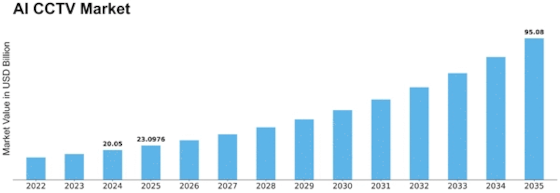

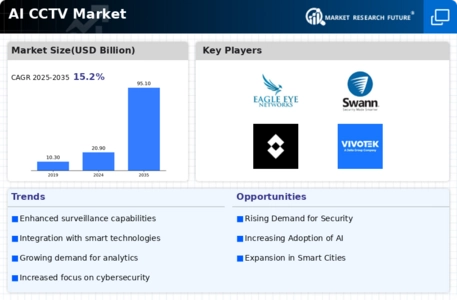
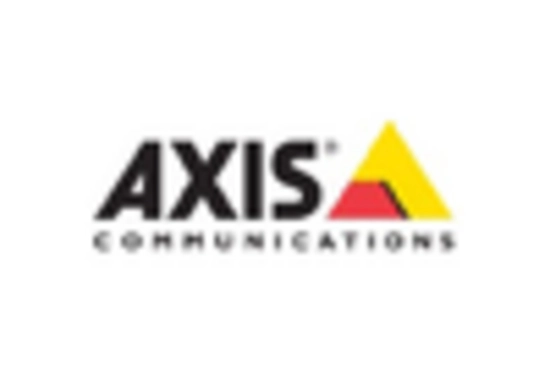

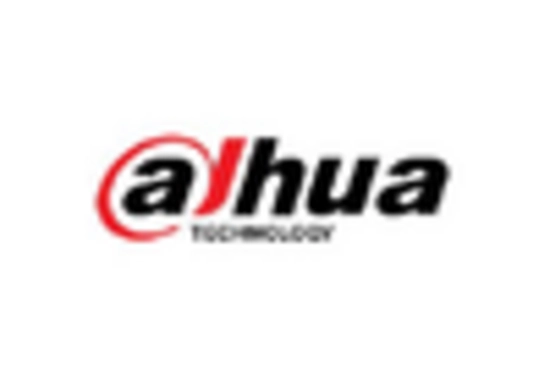

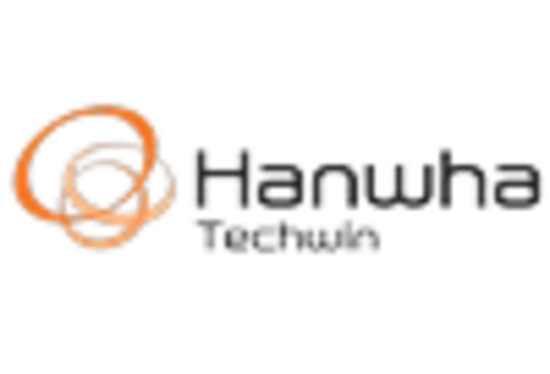


Leave a Comment